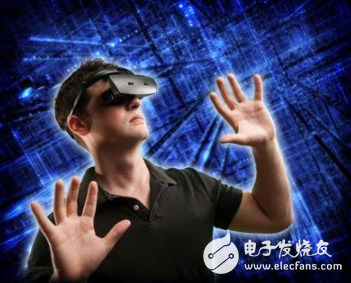AECOM announced that it has signed a cooperation framework agreement with HTC to jointly develop VR technology.
Virtual Reality (VR) is rapidly becoming a transformative force in the architecture and construction industries, setting the stage for future development. Despite the current VR market being somewhat underdeveloped, its potential for growth is immense. By integrating VR into building processes, companies can achieve remarkable efficiency and significant cost savings, while elevating design precision and innovation to new heights.
AECOM, a global leader in integrated infrastructure services, recently announced a strategic partnership with HTC, a pioneer in smart mobile devices and virtual reality technology. This collaboration aims to explore and promote VR solutions across the Architecture, Engineering, and Construction (AEC) industry, driving forward technological advancements and reshaping traditional workflows.

According to Qiao Quansheng, President of AECOM Asia Pacific, "Virtual reality has the potential to be the most significant transformation in the field of architecture and engineering. It not only enhances efficiency and reduces costs but also pushes the boundaries of precision and durability in design. Making these technologies practical tools is a clear demonstration of AECOM’s commitment to leading innovation in the industry."
This long-term collaboration highlights AECOM's leadership in delivering large-scale infrastructure projects globally and showcases HTC’s dedication to developing next-generation technologies. HTC’s VIVE system is considered one of the most advanced VR solutions, featuring cutting-edge 360-degree spatial tracking technology that allows for immersive experiences.
Bao Yongzhe, Deputy General Manager of HTC’s New Technology Department, added, “We are excited to partner with AECOM, a top-tier infrastructure company. Over the past year and a half, we’ve seen major corporations use Vive for training, product design, and design evaluation. Through this partnership, we aim to provide immersive visualization solutions throughout the design, planning, and construction phases, helping the AEC industry enter a new era.â€
As part of the agreement, the Vive FOCUS, HTC’s first high-end VR headset designed specifically for the Chinese market, will undergo beta testing in a VR lab in Taiwan. This lab will serve as a hub for future innovations, exploring how VR can be used by architects, engineers, and construction professionals to visualize and optimize the planning, building, and maintenance of physical structures.
The content developed in this lab will be showcased on a specialized AEC portal, aiming to promote the widespread adoption of VR technology among industry professionals. With such initiatives, the future of construction and design looks more immersive, efficient, and innovative than ever before.
Flashing led module for pop display
Flashing Led Module, Led Display Flasher, Led Flash Modules
AST Industry Co.,LTD , https://www.astsoundchip.com
